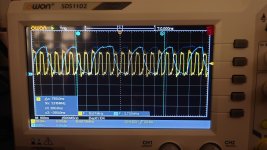Kai Robinson
Well-known member
Yeah, i'd looked into it, but it's beyond me, the glitch stuff - especially on MCU's this old - i'd be scared of barbecuing it!It may be possible to bypass the code protection using glitching techniques for fault injection. But unless there's a documented method for this series of chips or someone experienced with glitching, it might just be easier to re-implement. I have code for at least one Apple ADB controller, but it's a much later version.
I find it surprising that your first step wasn't to create schematics. Doing layout directly just sounds like too much effort to me. But you get to do your project your way! []
As for the schematic - oddly, tracing back the schematic is easier using the sprint layout, because you have the 'test pin' function - which shows all tracks connected to a pin, what goes to where etc.

